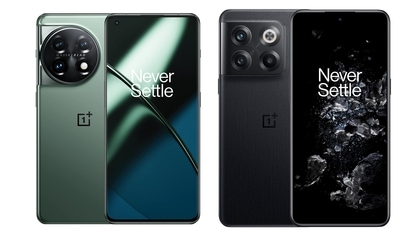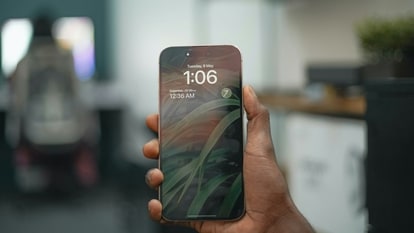LG Optimus Sol Review
The LG Optimus Sol is one of the newest Android smartphones to be launched in India by LG. It has a 3.8-inch Ultra AMOLED display, 1GHz processor, 5 megapixel camera with 720p HD video recording and Android 2.3 Gingerbread, all in a slim 9.8mm body. Read on for the full review of this handset.
The LG Optimus Sol is one of the newest Android smartphones to be launched in India by LG. It has a 3.8-inch Ultra AMOLED display, 1GHz processor, 5 megapixel camera with 720p HD video recording and Android 2.3 Gingerbread, all in a slim 9.8mm body. Read on for the full review of this handset.
Design:
The Optimus Sol has a slim, all-black design. At first touch, the phone felt severely plasticky, which is saying something coming from someone who uses a Nexus S on a daily basis. However, eventually I gotten used to the material of the phone. I also noticed that despite the plasticky body the build quality was quite good.




The design of the phone is simple and understated. The thinness, coupled with the light weight, also makes holding and carrying the phone a pleasure. However, the glossy body does attract a lot of fingerprints.


On front of the phone we find the earpiece at the top, with a camera lens and proximity sensor right next to it. Unfortunately, there is no ambient light sensor on the Optimus Sol.
Below we find the 3.8-inch Ultra AMOLED display. The display does not take up as much space as one might assume looking at the length of the phone, which leaves considerable space below it. Some of it is taken by the three capacitive keys but even they are placed right at the bottom, with about a finger's width of gap between them and the display. Not only does this make them look a bit odd but also makes it a bit inconvenient to access them as they are right next to the bottom edge. If, like me, you place your pinky finger below the bottom edge of the phone for support then your thumb will constantly hit your pinky when you try to press these keys.


The keys themselves are backlit and work well with a satisfying haptic feedback. However, since the backlight does not stay on all the time and there is so much space below the display, you often end up hunting for the keys in the dark.


On the left side of the phone are the volume control keys. The keys are quite flat, which makes them difficult to use if you hold the phone in your right hands. However, if you hold it in your left hand the volume keys fall right under your thumb.
On the top is the power key, headphone jack and the micro USB port under a plastic flap.


On the back you find a large battery cover that covers the entire backside of the phone. The cover has cutouts for the camera lens at the top left and the loudspeaker grille near the bottom right. The cover is made up of glossy plastic. Along with picking up fingerprints, the cover will also get covered with scratches, which is why I preferred to keep the phone on its face. Not only did it protect the back cover but also improve the loudspeaker performance. Also, since the display is covered by the scratch resistant Gorilla Glass, there was no risk of damaging it.
Display:
Th LG Optimus Sol has a 3.8-inch, WVGA (800 x 480) resolution, Ultra AMOLED display. The display uses an RGBG PenTile-matrix layout for the sub pixels like the Super AMOLED displays on Samsung's phones, which means each pixel on the display has only two sub pixels, either red and green or blue and green and not three as on a standard RGB display.
As you'd guess, this does come with its drawbacks, which means images have a slight dotted appearance and white text on black looks a bit rough. Having said that, this is only noticeable of you have another RGB display with you to compare side-by-side.
Most people will find the display on the Optimus Sol absolutely gorgeous. The colors are vibrant without being too over saturated, the blacks are truly black and the viewing angles are exceptional. The display also does well under direct sunlight, something that older AMOLEDs just couldn't do.
Hardware and Software:
The Optimus Sol has a 1 GHz Qualcomm Snapdragon MSM8255 processor and 512MB of RAM, which is the norm for phones in its class. The hardware is naturally not very powerful considering the price of the device but you will be able to run almost all the applications and games on it just fine.
On the software front the Optimus Sol runs on Android 2.3.4 with LG's custom skin on top. Compared to some other OEM's out there, LG's skin is relatively light, and it's influence is mostly seen on the homescreen and the application launcher. One of the things I like about the LG skin is that it's a lot smoother than others out there. LG uses a 60fps frame rate for the OS, which is not always possible for the hardware to pull off but when it does you will notice that it runs a lot smoother than phones from competing brands, with almost a Windows Phone like smoothness.
There is not much to talk about the built-in apps. Some of them have been changed, such as the music player, which are better than the stock Gingerbread. Other such as the photo gallery have been kept. The application drawer has been modified to show downloaded apps separately at the bottom. You can create more categories in the app drawer if you like, collapse them to hide them or even put them on the homescreen as a folder. You can have up to seven homescreens on the Optimus Sol. The notification screen has been changed to have shortcut icons for Wi-Fi, Bluetooth, etc. at the top, along with the controls for the music player, which strangely show up even when the music is not being played.
Multimedia:
The Optimus Sol has a 5 megapixel camera with auto-focus and flash. LG has left out the flash for the camera, for reasons best known to it. The phone also lacks a camera shutter button and there is no way to launch it from the lock screen, so the quickest way ti launch it would be from the homescreen through a shortcut icon. The camera app has been changed from the bare bones default Gingerbread app and now has all the basic functions.
The image quality of the camera on the Optimus Sol was quite mediocre. The images had a lot of noise, even with the heavy handed noise reduction algorithm. The latter also took its toll on the level of details, which was disappointing. The dynamic range was poor too. In low light, the noise reduction would be bumped up a notch, which meant even poorer details and over sharpening artifacts. The lack of flash also hurt low-light images.




The video recording wasn't any better either. Although the continuous auto-focus does a decent job, the videos wee pixellated and devoid of details like the still images. Overall, the camera on the Optimus Sol isn't its strongest point and could very well be its weakest one.
The rest of the multimedia experience is saved by the display, which does a fabulous job of displaying the pictures and videos. LG has its own video player on the Optimus Sol, which plays all your AVI files encoded with DivX and Xvid. Unfortunately, the player cannot play sound on videos that use the AC3 codec and cannot play MKV files too. Switching over to a third party app like DicePlayer revealed that the phone also has a hard time with certain 720p MKV files. Despite having the same processor, the HTC Rhyme, which we reviewed recently, managed to play those same files on the same software perfectly fine.
The music player on the Optimus Sol is pretty good and the in-ear headset provided by LG is also quite good. The loudspeaker also sounds good and is fairly loud.
Battery Life:
The Optimus Sol has a 1,500mAh rechargeable battery that is user replaceable. The battery life on the Optimus Sol was quite average, with the phone lasting around a day of regular use. The AMOLED display does save battery compared to an LCD when viewing dark content but ends up consuming more when it's displaying brighter content, such as web pages. Still, a day is not particularly bad but for a phone without a power hunger hardware I expected a bit more. If you're into video playback then you will be glad to know that the Optimus Sol lasts around five hours while playing back 720p files.
Verdict:
The Optimus Sol costs ₹ 16,990. That's a lot when you compare it against its two direct rivals, the Sony Ericsson Xperia neo V and the Motorola DEFY+, both of which can be had for less than ₹ 15,000 today. Sure, the two have had time for their price to settle down whereas the Optimus Sol is relatively new, that's not something the buyer has to concern himself with. Moreover, the Optimus Sol doesn't have a lot over those two to justify the premium you will be paying for it. The two good things about it are the thin and light design and the Ultra AMOLED display, but overall, as a product the Optimus Sol still lacks behind the Xperia neo V, which we think is the best of the lot right now.
What LG needs to do now is drop the price of the Optimus Sol if it intends to undercut the competition, because their phone isn't capable enough to do that on its own.




Catch all the Latest Tech News, Mobile News, Laptop News, Gaming news, Wearables News , How To News, also keep up with us on Whatsapp channel,Twitter, Facebook, Google News, and Instagram. For our latest videos, subscribe to our YouTube channel.


























